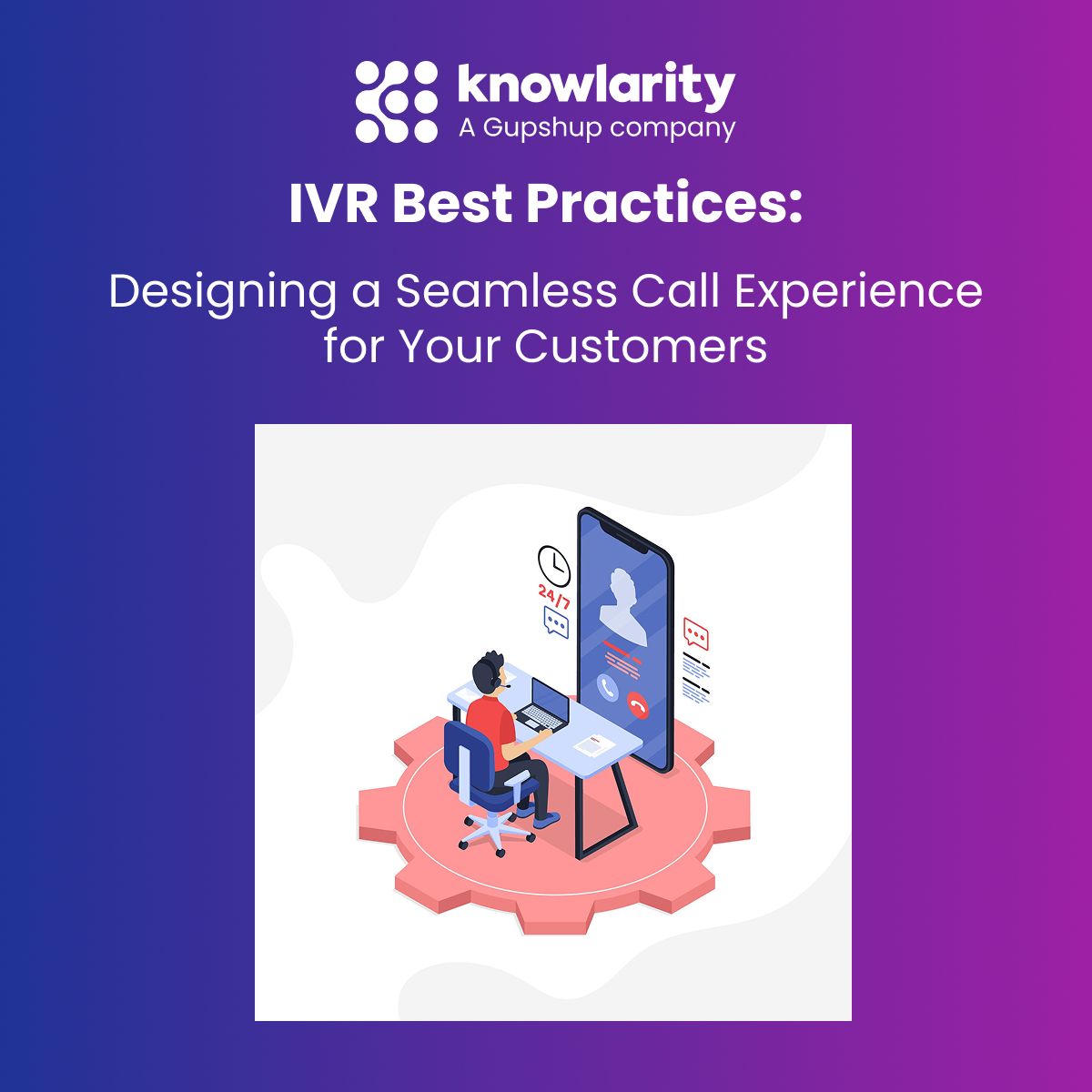IVR Best Practices: Designing a Seamless Call Experience for Your Customers

In today's digital-first world, it might be surprising to learn that voice communication remains a critical touchpoint for customer service. When customers pick up the phone to call your business, their experience with your Interactive Voice Response (IVR) system can make or break their perception of your brand. A well-designed IVR creates effortless experiences, while a poorly implemented one can frustrate customers and damage loyalty.
Understanding the Critical Role of IVR in Customer Experience
Interactive Voice Response systems serve as the frontline of your voice communication strategy. These automated phone systems interact with callers through voice commands or keypad inputs before connecting them to the appropriate department or representative. When implemented correctly, IVR systems offer significant benefits:
- Improved customer satisfaction through faster resolution times
- Reduced operational costs by efficiently routing calls
- 24/7 service availability without constant human staffing
- Consistent brand experience across all customer interactions
- Valuable data collection for future service improvements
However, many businesses still struggle with IVR implementation, creating experiences that customers dread rather than appreciate. Let's explore the essential best practices for creating an IVR system that delights callers rather than frustrating them.
Essential IVR Design Best Practices
1. Keep It Simple and Straightforward
The most significant rule of IVR design is simplicity. Your customers aren't calling to navigate a complex menu system—they're calling to solve a problem quickly. Best practices:
- Limit menu options to 4-5 choices per level
- Keep total menu depth to no more than 3 levels
- Use clear, concise language that eliminates jargon
- Present the most frequently used options first
- Always provide a way to reach a human representative
Remember that every additional second a customer spends navigating your IVR system increases their frustration. A streamlined design respects their time and improves satisfaction.
2. Personalize the Experience
Today's customers expect personalization in every interaction. Modern IVR systems can leverage customer data to create tailored experiences.
Best practices:
- Use caller ID to identify returning customers
- Reference past interactions when appropriate
- Customize menu options based on customer history
- Address customers by name when possible
- Remember customer preferences for future interactions
For example, if a customer regularly calls about billing issues, your IVR can prioritize billing options in the menu when they call. This simple personalization saves time and demonstrates attentiveness.
3. Optimize for Speech Recognition
While traditional touchtone IVR systems work well in many cases, speech recognition technology has advanced significantly and often provides a more natural user experience.
Best practices:
- Implement natural language processing (NLP) for more conversational interactions
- Design clear prompts that elicit specific responses
- Provide examples of how to respond to voice prompts
- Include touchtone options as backup for noisy environments
- Continuously train your speech recognition system with real caller data
Modern speech recognition systems can understand different accents, dialects, and even detect emotion in a caller's voice, allowing for more nuanced routing and response.
4. Design for Accessibility
Your IVR system must accommodate all customers, including those with disabilities or language barriers.
Best practices:
- Provide multilingual options based on your customer demographics
- Use clear audio quality with appropriate volume levels
- Allow sufficient time for responses, especially for elderly users
- Test your system with diverse user groups
Accessibility isn't just good practice—in many regions, it's required by law. Ensuring your IVR system works for everyone demonstrates your commitment to inclusive service.
5. Regularly Test and Optimize
An IVR system is never truly "finished." Customer needs evolve, and your system should evolve with them.
Best practices:
- Analyze call data to identify drop-off points and bottlenecks
- Conduct regular user testing with real customers
- A/B test different menu structures and prompts
- Monitor key metrics like containment rate and first-call resolution
- Schedule quarterly reviews of your IVR flow and messaging
By treating your IVR as a continually improving asset rather than a set-and-forget solution, you'll ensure it remains effective as customer expectations change.
Technical Considerations for Modern IVR Systems
1. Cloud-Based IVR Solutions
Today's leading IVR systems leverage cloud technology for greater flexibility, scalability, and feature sets.
Key advantages:
- Rapid deployment and updates without hardware changes
- Seamless integration with CRM and other business systems
- Automatic scalability during high-volume periods
- Enhanced security and compliance features
- Lower total cost of ownership compared to on-premises solutions
Cloud-based IVR systems are particularly valuable for businesses with fluctuating call volumes or those seeking to implement advanced features without significant capital investment.
2. Omnichannel Integration
The most effective IVR systems don't operate in isolation—they're part of a broader omnichannel customer service strategy.
Integration opportunities:
- Connect IVR data with web and mobile app interactions
- Enable channel switching without losing context
- Use SMS to send follow-up information after IVR interactions
- Allow customers to schedule callbacks instead of waiting on hold
- Integrate visual IVR options for smartphone users
When your IVR system "knows" about customer interactions across other channels, it can provide more relevant options and avoid asking for information the customer has already provided elsewhere.
3. Advanced Analytics and Reporting
Modern IVR systems generate valuable data that can drive continuous improvement in customer service.
Key metrics to track:
- Containment rate (percentage of calls fully handled by the IVR)
- Average handling time before reaching a representative
- Menu option usage frequency
- Call abandonment rates at different points in the IVR flow
- Customer satisfaction scores for IVR-handled vs. agent-handled calls
By analyzing these metrics, you can identify optimization opportunities and quantify the impact of changes to your IVR system.
Common IVR Pitfalls to Avoid
Even well-intentioned IVR implementations can fall prey to these common mistakes:
1. Excessive Hold Times
Nothing frustrates customers more than long waits after navigating an IVR system. If agent availability is limited, consider:
- Offering callback options that maintain the customer's place in queue
- Providing estimated wait times so customers can decide whether to hold
- Creating self-service options for common queries
- Implementing intelligent routing based on customer value or issue urgency
2. Circular Menu Traps
Customers should never feel trapped in your IVR system. Always provide:
- Clear exit points from every menu
- Options to return to the previous menu
- A universal command to reach a human representative
- Shortcuts for experienced users to bypass standard menus
3. Over-Automation
While IVR can handle many tasks effectively, some situations demand human intervention. Design your system to recognize when:
- A customer has repeatedly failed to complete a task through the IVR
- Complex or sensitive issues require empathy and human judgment
- A high-value customer deserves personalized attention
- A caller is showing signs of frustration or distress
Automating appropriately—rather than excessively—preserves the efficiency benefits of IVR while ensuring quality service in complex scenarios.
Measuring IVR Success
How do you know if your IVR system is truly delivering value? Look beyond basic operational metrics to these customer-centric indicators:
- Customer Effort Score (CES): How easy was it for customers to accomplish their goals?
- First Contact Resolution (FCR): Were issues resolved during the initial call?
- Net Promoter Score (NPS): Do customers recommend your service to others?
- Repeat Contact Rate: Do customers need to call back for the same issue?
- Containment Rate Satisfaction: Are customers satisfied with self-service resolutions?
These metrics provide a more holistic view of IVR performance than operational measures alone.
Implement Best-in-Class IVR with Knowlarity
Creating an effective IVR system requires both technical expertise and customer experience insight. Knowlarity's cloud communication solutions deliver state-of-the-art IVR capabilities that can transform your customer calling experience.
Our IVR solutions offer:
- Intuitive visual design tools for creating optimal call flows
- Seamless integration with your existing CRM and business systems
- Advanced analytics to continuously optimize performance
- AI-powered features for more natural customer interactions
- Scalable architecture that grows with your business needs
Ready to transform your customer calling experience?
Contact Knowlarity today for a personalized IVR assessment and discover how our cloud communication solutions can help you deliver exceptional customer experiences while reducing operational costs. Request a Demo | Contact Our IVR Specialists
Written By: Divya Shukla

